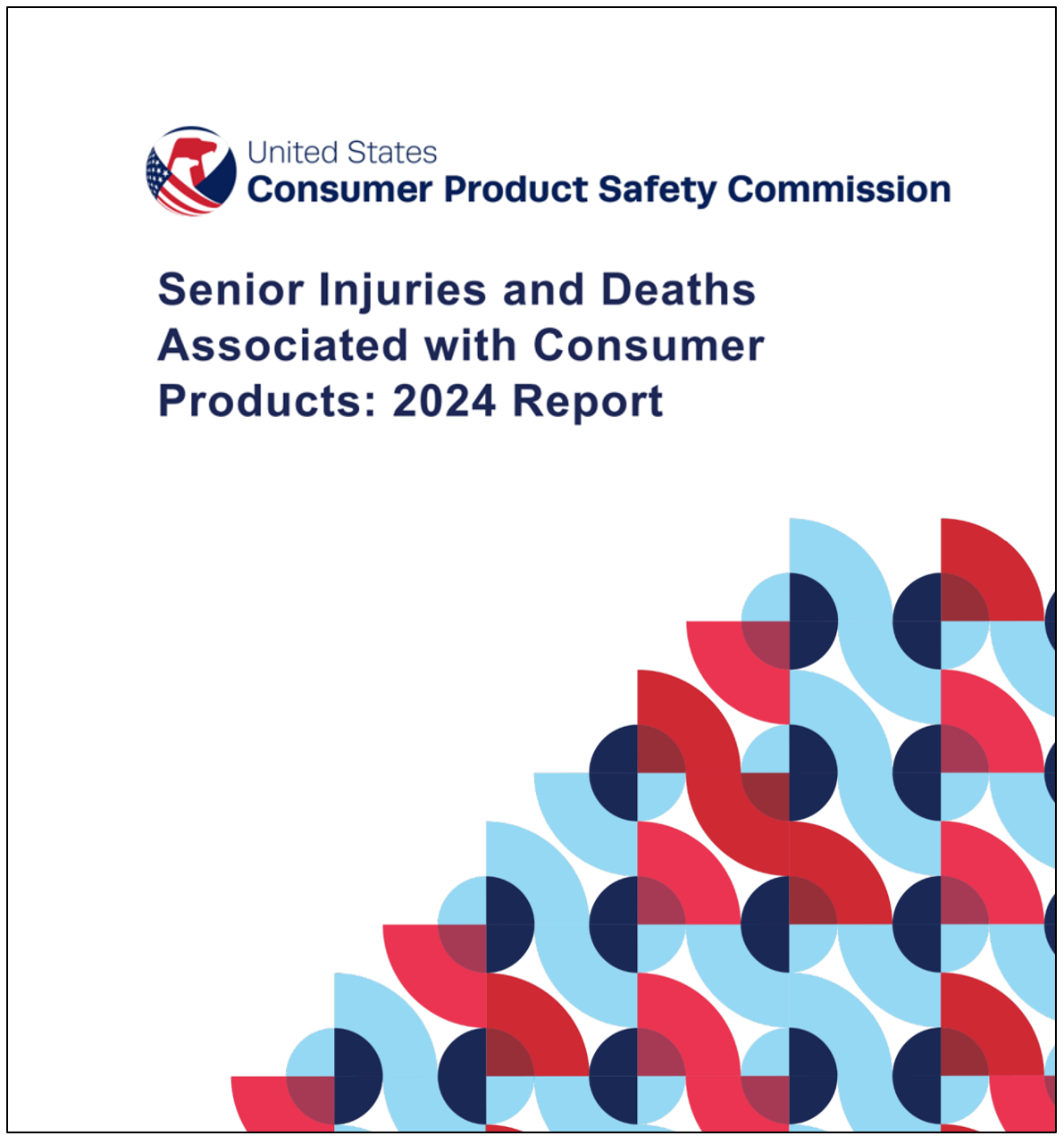Consumer Product Injuries to Seniors on the Rise

The 2024 report from the U.S. Consumer Product Safety Commission shed light on a troubling trend: injuries and deaths associated with consumer products are on the rise among Americans aged 65 and older.
Between 2018 and 2023, emergency room visits for seniors related to consumer products jumped from approximately 3.3 million to 3.5 million - a statistically significant increase. While there was a temporary dip during the height of the COVID-19 pandemic, the overall trend remains unmistakably upward.
When focusing on the last two years, the findings are even more concerning:
- 77% of senior injuries stem from falls involving everyday household items rather than riding products like bikes or scooters.
- Seniors are 2.1 times more likely than younger adults (ages 25–64) to visit the ER for consumer product-related injuries.
- Seniors are 6.5 times more likely to suffer serious injuries, including hospitalization or death.
- For non-fall injuries, seniors are 1.8 times more likely to experience serious outcomes than their younger counterparts.
In breaking down the types of injuries seniors experience, the vast majority - 96 percent - are tied to “non-riding product mechanical hazards.” These include categories such as falls, cuts or piercings, overexertion, being struck by or against an object, and foreign body incidents.
These statistics may indicate a serious issue: that the consumer products that may seem harmless to the average adult might actually pose significant risks to older adults, especially if design flaws, poor instructions, or lack of appropriate safety warnings are involved.
Fatalities
From 2018 to 2022, the number of senior deaths tied to consumer products grew from 34,198 to 43,196. In contrast to the temporary dip in injury reports during the pandemic, fatality numbers continued to rise, suggesting that dangerous products were still in use and taking lives.
Significantly, eighty-four percent of these deaths were due to falls—translating to an average of 34,514 fall-related fatalities annually. Compared to adults aged 25–64, seniors are:
- 10.4 times more likely to die from consumer product-related incidents overall.
- 24.9 times more likely to die from fall-related incidents specifically.
- 2.6 times more likely to die from non-fall-related product hazards.
What This Means for Manufacturers – and Families
Such statistics may behoove companies that design, produce, and sell consumer goods to increase consideration of the safety of older adults: evaluating potential fall hazards, improving product instructions, and ensuring adequate warnings for higher-risk populations.
Families may be driven to take a proactive approach in assessing the safety of home environments, actively looking out for product recalls, and reporting any incidents involving hazardous consumer goods.
No one should have to live in fear of the very products meant to support their daily life. And no family should bear the burden of preventable injuries or loss without answers or recourse. If a loved one has been injured because of what you believe to be a faulty product or negligent manufacturer, consider contacting a top Philadelphia attorney for product liability cases.

